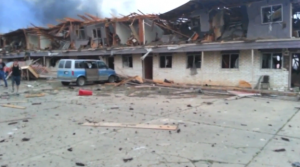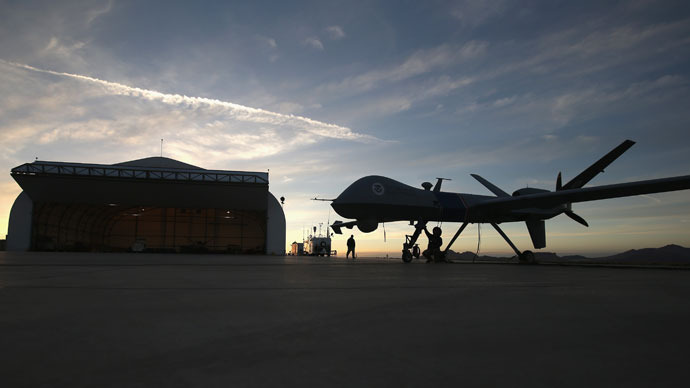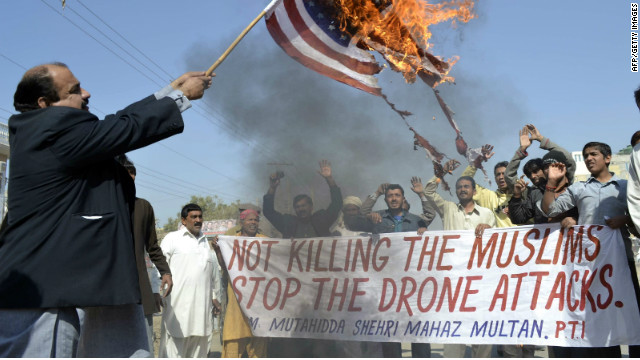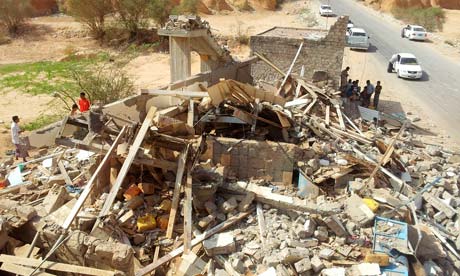(americanthinker.com) The International Telecommunications Union (ITU), an imprint of the UN, is holding its World Conference on International Telecommunications (WCIT) from December 3-14, 2012. The stated purpose of the WCIT is to update the UN’s “global treaty” on telecommunications to deal more directly and comprehensively with the internet. Knowing who controls the UN, it is not hard to see that a primary aim of the updated “treaty” will be to give credence to the regulation and monitoring of online activity in ways that are desirable to the (authoritarian) majority of member states.
Here is a portion of the ITU’s official explanation of the need for a new regulatory regime, in its Resolution 146:
[T]he International Telecommunication Regulations (ITRs) were last amended in Melbourne in 1988.
[T]he international telecommunications environment has significantly evolved, both from the technical and policy perspectives, and… it continues to evolve rapidly.
[A]dvances in technology have resulted in an increased use of IP-enabled infrastructure and relevant applications presenting both opportunities and challenges for ITU Member States and Sector Members.
[I]n order for ITU to maintain its pre-eminent role in global telecommunications, it must continue to demonstrate its capacity to respond adequately to the rapidly changing telecommunication environment.
[I]t is important to ensure that the ITRs [International Telecommunications Regulations] are reviewed and, if deemed appropriate, revised and updated in a timely manner in order to facilitate cooperation and coordination among Member States and to reflect accurately the relations between Member States, Sector Members, administrations and recognized operating agencies.
In case you missed a few classes of Regulatory Bureaucracy Speak 101, please allow me to translate:
Since we last updated our global telecommunications regulations, the internet, operating in a relatively unregulated environment, has grown by leaps and bounds, as human productive endeavors when left unregulated have an annoying tendency to do. Therefore, in order to keep this wildly successful communications network from getting any farther ahead of our regulatory apparatus, it is time to develop a strong, binding framework to limit internet growth, use, and activity in ways deemed necessary by those UN member states, such as China, Russia, and Iran, that are opposed on principle to unrestricted international communication, on the grounds that it tends to foster an informed and rebellious population.
In sum, authoritarian regimes with a vested interest in limiting public access to the outside world, or monitoring and censoring communications for “sensitive” content, are beginning to question whether the ITU is a sufficient guarantor of their control over their inmates with regard to global communication. If we do not act now to “demonstrate our capacity to respond adequately,” our “pre-eminent role in global telecommunications” — i.e., our role as facilitator of the statist status quo — will be challenged. In other words, if Vladimir thinks we are not serving his interests anymore, he will get angry, and no one wants to see Vladimir angry.
Is this translation of mine all just a lot of conservative fear-mongering about an innocent UN agency going about its daily business of fostering “supportive, transparent, pro-competitive, and predictable policies,” as Resolution 146 says?
Well, one easy way to check on that would be to read through the WCIT meeting’s official agenda. Unfortunately, that agenda, though linked on the ITU website, is password-protected to restrict access to members of the global bureaucracy. Specifically, the agenda may officially be read only by those government administrators, relevant apparatchiks, and contributing academics who are members of the Telecommunication Information Exchange Service. Yes, that is TIES — you could not invent a more suitable acronym for the “information service” of a global regulatory agency.
Internet users and providers, including even some, such as Google, that have a spotty history of resisting government encroachments into their industry, are expressing grave concerns about the ITU’s intentions. However, the ITU’s secretary-general, Hamadoun I. Touré, seeks to reassure us that this meeting of the UN’s telecommunications regulatory agency has nothing to do with regulating communication. Asked on Al-Jazeera why, given the extraordinary success of the internet as an unregulated domain, the ITU is choosing to write regulations now, he said:
The ITRs that is going to take place in Dubai is not about that. The ITRs is not about internet regulation. I’m very much surprised that all the debate is about this. The ITRs is revising the 1988 treaty that set the stage for the information society we are in today. But at the time, in 1988, it was only telephone communications, mainly, and back then, the settlement between operators was based on time, distance, and location. Today, we have a very significant growth of voice, video, and data, and therefore there is a need to fine tune the business model so that there is more investment in the infrastructure, to cope with the exponential growth in voice, video, and data traffic…. It’s not about internet freedom. Nobody today would dare to go against the freedom of the internet.
Lesson One on how to recognize a liar: if absolutely everything a man says is provably untrue, he is probably lying. (Merely ignorant people speak the truth occasionally, just by accident.)
“The ITRs” — that is, the International Communications Regulations — are “not about regulation.” So when we read, as in Resolution 146 above, that the International Telecommunications Regulations must be “revised and updated in a timely manner,” this revision and updating (of “Regulations”) is somehow unrelated to regulation. Well, that’s comforting.
The purpose of this conference — which the chief regulator, cutting to the chase, does not refer to by its actual name (WCIT), but by its primary objective, the ITRs that will be produced there — is to revise “the 1988 treaty that set the stage for the information society we are in today.” What a perfect self-revelation of the power-mad soul of a globalist regulator. The UN treaty on telecommunications, Touré claims, “set the stage” for the internet revolution in mass communications. Brilliant researchers, technological whiz kids, and adventurous entrepreneurs did not make it happen; UN bureaucrats did.
And we must put this absurd self-aggrandizement in the context of Touré’s very next sentence: “But at the time, in 1988, it was only telephone communications, mainly.” So the 1988 UN regulations “set the stage” for the internet boom, even though they had nothing to do with the internet. To be fair, this statement is undoubtedly true, though not in a way that Touré would ever concede: it was indeed the lack of UN regulations regarding the internet that made its exponential growth possible.
And this unfettered growth, of course — the sense that the internet is expanding “out of control” — is precisely the “challenge” that the new ITRs will be designed to address. Note, as well, how reminiscent Touré’s words are of another famous anti-freedom globalist, who, in his well-known “You didn’t build that” remarks, offered the following:
The internet didn’t get created on its own; government research created the internet, so that all the companies could make money off the internet.
By “on its own,” in that sentence, President Obama means “by individuals.” His point, like the ITU secretary-general’s, is that coercive regulatory authorities are ultimately responsible for the existence and success of the internet, as they are responsible for the existence and success of everything. This makes government the ultimate proprietor of all things, thus authorizing government to insert itself into these things at its own discretion.
Another Obamaesque point from Touré: the development of new communications technology creates “a need to fine tune the business model so that there is more investment in the infrastructure.” Market forces, you see, could never develop “infrastructure” to meet the needs of business expansion — rather, government, observing current conditions, must determine what people need, and make or arrange the appropriate “investments” to provide it. Again, this reinforces the notion of government as sole proprietor of the underlying conditions of commerce — that is, of the market itself. Government creates the terms and conditions, and then “allows” people to carry out their business on its well-regulated turf. The “free market,” the roads, the internet — all of these are, in the authoritarian’s view, “infrastructure,” and we all know that “infrastructure” is in the public domain. The need for “infrastructure” is now the left’s euphemistic argument for government regulation of everything.
The best part of Touré’s lying clinic, however, is saved for last: “Nobody today would dare to go against the freedom of the internet.” If a sixth grade naïf said such a thing, a responsible adult would smile kindly, and then gently explain that there are, sadly, many people in the world who do not believe men should be free. If the chief regulator of the UN’s telecommunications agency says it, you should feel like the humans in the movie Mars Attacks as the aliens recite their memorized English sentence — “Don’t run, we are your friends” — while zapping everyone in sight.
The UN agenda is dominated by national governments that certainly would, and do, dare to “go against the freedom of the internet.” (Ask a Chinese exchange student if she has a Facebook account, and see what response you get. Actually, don’t ask — those kids don’t need any added fear in their lives.) Of course Touré knows this. His explicit denial of the obvious proves him a (bad) liar. “Freedom of the internet,” as defined by the UN, has precisely the same validity and purpose as the word “Democratic” in the name Democratic People’s Republic of Korea.
So what is this all about? It is often said that the first task in a modern military occupation is to take control of the means of mass communication, thereby to control the dissemination of information. The internet, by virtue of its having spread throughout the world so quickly, and of its being largely immune to national boundaries, creates a special problem for authoritarian governments which are, in effect, occupying forces in their own nations.
Certain governments have taken many steps to curtail internet activity within their own borders, of course. The problem is that the very free nature of the internet itself tends to shine a bright spotlight on the oppressiveness of such national policies. Far preferable for such suppressors of speech, then, would be an “international treaty” reached by “global consensus” that creates a system of loopholes for the suppression of speech on grounds of “national security” and the “prevention of foreign interference in a sovereign nation’s political process.”
In short, suppression of undesirable political speech, both within and between nations, would be much easier and less subject to scrutiny if it could be undertaken with the imprimatur of a UN treaty full of deliberately vague language about “protecting the integrity of a nation’s self-determination,” for example. Furthermore, once such a treaty — i.e., set of regulations — becomes the agreed upon standard for all or most nations, its euphemisms will begin to sound more palatable and reasonable to an inattentive public. (“After all, it isn’t right that foreigners should be stirring up civil discord and anti-government sentiment, is it?”) Before you know it, today’s critics of the ITU’s agenda will be echoing John Boehner’s post-election capitulations on ObamaCare — “it’s the law of the land.”
No surprise, then, that the main impetus behind the implementation of new regulations, and the granting of greater authority to the ITU itself, comes from Russia and China. (See Declan McCullagh’s observations on this threat here, and L. Gordon Crovitz’ Wall Street Journal piece here.) Online fraud, spam, and issues of protecting public morals will all be used as convenient cover for creating international authority for national authoritarianism.
It seems likely that the new ITRs — ushered in under the guise of modernizing “infrastructure” — will have as their main purpose and effect the whitewashing of despotic suppression of free speech, monitoring of users, and restriction of users’ access to information not approved for dissemination by the state. These methods are already used by some governments without (official) UN approval. The formal go-ahead from UN headquarters, however, will make the job of crushing internet age resistance movements (think of Iran’s Green Revolution) much easier, by allowing the oppressive regime to file formal grievances against groups or governments that it deems to be violating its national sovereignty or undermining its political system.
This quiet UN takeover of the internet is the important first step in a new kind of occupation. The globalists, with the help of the re-elected Obama administration, are going to move forward quickly with their plans for what Al Gore and Herman van Rompuy call “global governance.” A key part of this process is the reduction of the world’s last defense against authoritarianism — the United States of America — to the status of just another mild-mannered vote at the UN. Enter Barack Obama, with his hyper-conciliation to the Muslim Brotherhood, his promise to Vladimir Putin to finish dismantling America’s defenses after his re-election, and his remaking of a prosperous constitutional republic as an economically doomed leftist regulatory state.
Just as hyper-regulation within a nation subverts representative government, by creating a panoply of bureaucratic directives that supervene upon changing electoral tides, so international hyper-regulation will have the effect of nullifying any transnational voice of unified dissent — specifically, any voice speaking on behalf of the free exchange of ideas.
The range of speech, both with regard to content and dissemination, will be curtailed by the ITU’s proposed regulations. That will be the point of these regulations. They will help authoritarians preserve their power, prevent the oppressed from organizing from a distance, and restrict the much needed influx of moral support from abroad.
Now, Mr. Obama, if you will just sign one more executive order, Agenda 21 in its entirety will become “the law of the land,” and the forced migration may proceed — gently at first, as we don’t want to startle anyone. But don’t worry, if the objections get too boisterous, we can always assert the national security provisions of the International Telecommunications Regulations to tamp things down a little. Those ITRs are proving very effective for normalizing conditions in China, Russia, and Iran. And your Department of Homeland Security has already anticipated this eventuality by introducing into its guidelines on domestic terrorism language identifying people who revere liberty as potential security threats.
In any case, as November 6 proved, at least 140 million American adults can be effectively subdued by repeatedly chanting, “Don’t run, we are your friends.”









 (fromthetrenchesworldreport.com) The communist insurgents within the United States continue their push to disarm we American nationals, even to the point of presenting poll numbers which have been proven to be false via their own previous admissions. Captain Mark Kelly, the husband of ex-Congresswoman Gabrielle Giffords, was making the rounds over the weekend, spouting his sedition while trying to present himself as some kind of American hero.
(fromthetrenchesworldreport.com) The communist insurgents within the United States continue their push to disarm we American nationals, even to the point of presenting poll numbers which have been proven to be false via their own previous admissions. Captain Mark Kelly, the husband of ex-Congresswoman Gabrielle Giffords, was making the rounds over the weekend, spouting his sedition while trying to present himself as some kind of American hero.
 Ben Emmerson wants to be clear: He’s not out to ban flying killer robots used by the CIA or the U.S. military. But the 49-year-old British lawyer is about to become the bane of the drones’ existence, thanks to the United Nations inquiry he launched last week into their deadly operations.
Ben Emmerson wants to be clear: He’s not out to ban flying killer robots used by the CIA or the U.S. military. But the 49-year-old British lawyer is about to become the bane of the drones’ existence, thanks to the United Nations inquiry he launched last week into their deadly operations..jpg) Are there THAT MANY terrorists now in America that they’re preparing for? A recent police, emergency management and National Guard
Are there THAT MANY terrorists now in America that they’re preparing for? A recent police, emergency management and National Guard 





 (EPJ) Rand Paul’s To Do List before officially running for president:
(EPJ) Rand Paul’s To Do List before officially running for president: